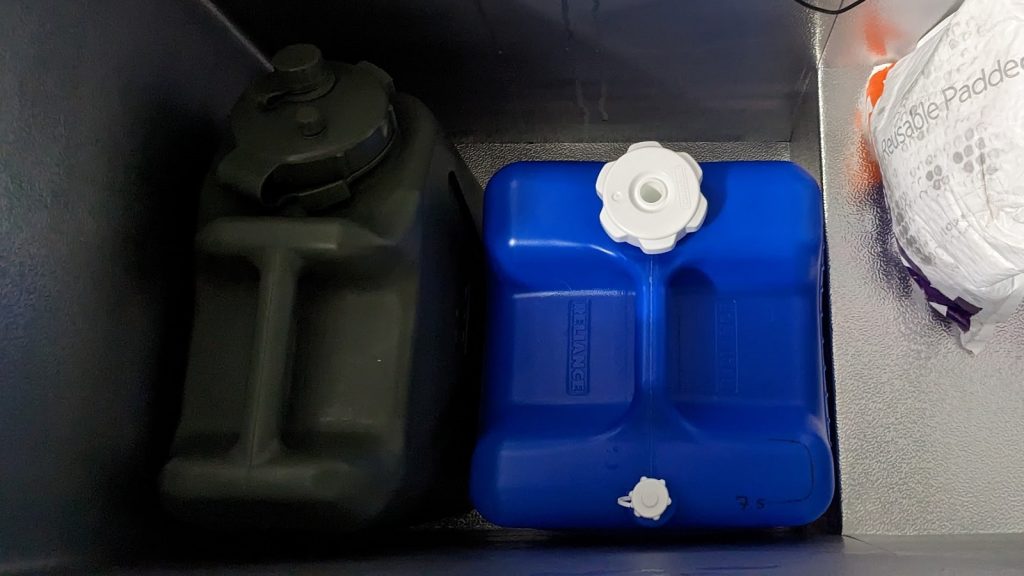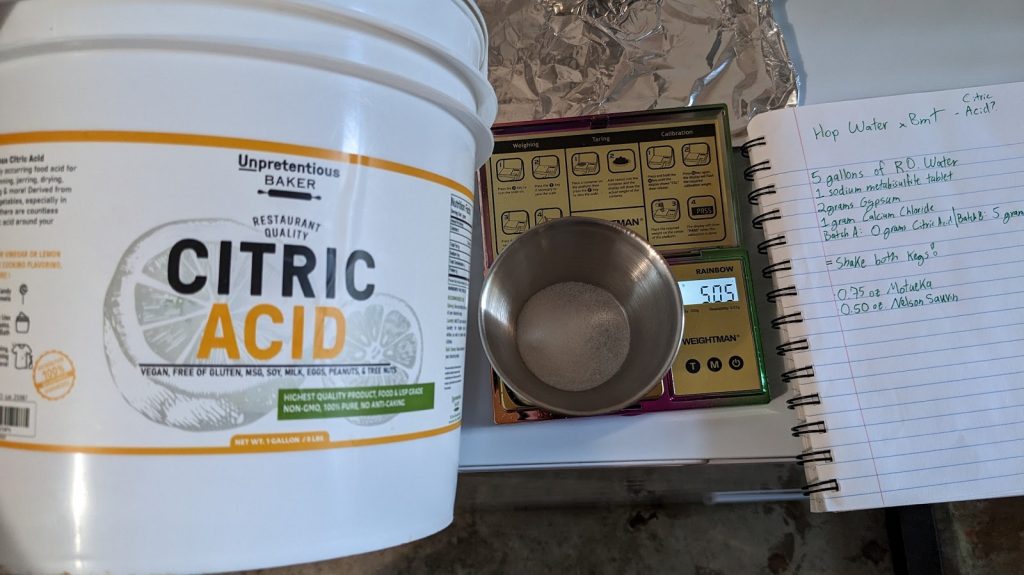Author: Alex Shanks-Abel
As the craft beer scene continues to mature in the United States, the number of beer drinkers interested in low/no alcohol products has grown substantially. Missing all but one of the essential ingredients in beer, hop water was first commercially released in 2013 as a viable alternative for the calorie and alcohol conscious consumer. Naturally, home DIYers and even some professional outfits began experimenting with approaches to crafting the best tasting hop water, which is where certain aspects of beer brewing come into play.
Brewers are well aware of the importance of pH, from improving extract efficiency during the mash to the perceptible impact it has on the finished product, as well as shelf stability. Beer is a lightly acidic beverage that falls in the range of 4.0 to 4.4 pH, which occurs as a combined function of water chemistry, malts, hopping rates, and fermentation. Water, on the other hand, is neutral to slightly basic, ranging anywhere from 6.5 to 8.5 pH. While not by a large amount, hops are known to increase pH, which can purportedly have the effect of reducing perceptible crispness while dulling hop presence. For this reason, many brewers acidify their wort post-boil in beers that will be dry hopped.
In the time I’ve been brewing, I’ve accepted that water chemistry has a meaningful impact on beer character. I’ve also accepted the importance of not overdoing my alcohol intake and have developed an appreciation for low/no alcohol alternatives. As a fan of sparkling water, I was excited to make my own hop water, though like others, I wondered about the pH issue and designed an xBmt to test it out for myself!
| PURPOSE |
To evaluate the differences between hop water dosed with citric acid to reduce pH and one that was not adjusted with acid.
| METHODS |
For this batch of hop water, I went with a blend of Motueka and Citra hops with the hope of accentuating citrus notes.
Does Anybody Really Know What Lime It Is?
5 gallons RO water
0.5 grams Sodium Metabisulfite
2 grams Gypsum
1 gram Calcium Chloride
5 grams Citric Acid (for 1 batch)
21 grams Motueka
14 grams Citra
I started by collecting 10 gallons/38 liters of RO water and storing in my 34°F/1°C chamber overnight to chill.
The next day, I added the same amount of sodium metabisulfite, gypsum, and calcium chloride to separate sanitized kegs.
Next, I added citric acid to just one of the kegs.
I then added the cold RO water to each keg, opting to go by weight to ensure identical volumes, and shook them to fully dissolve the minerals and acid.
Finally, I put the same amount of hops in separate stainless mesh filters then tossed one in each keg.
The filled kegs were left alone in my 34°F/1°C chamber for 12 hours before the hops were removed.
Wanting a nice sparkle, I burst carbonated the hop waters at 30 psi for 3 days before reducing the gas to serving pressure.
I measured the pH of both hop waters and found a rather vast, albeit predictable, difference.

At this point, the hop waters were fully carbonated and ready for evaluation.

| RESULTS |
A total of 23 people of varying levels of experience participated in this xBmt. Each participant was served 2 samples of the hop water where the pH was not adjusted with acid and 1 sample of the hop water adjusted with citric acid in different colored opaque cups then asked to identify the unique sample. While 12 tasters (p<0.05) would have had to accurately identify the unique sample in order to reach statistical significance, only 9 did (p=0.35), indicating participants in this xBmt were unable to reliably distinguish hop water where the pH was not adjusted from one where the pH was adjusted with citric acid.
My Impressions: Out of the 5 semi-blind triangle tests I attempted, I happened to guess the unique sample 3 times, though they were perceptibly identical to me. I was really happy with how these hop waters turned out– incredibly refreshing with a hint of lemon-lime citrus.
| DISCUSSION |
Hop water is a relatively new product aimed to provide hop lovers an alternative to higher calorie and alcohol beer, and since its inception nearly a decade ago, it has steadily grown in popularity. Similar to beer, pH has come to be viewed as important by many makers of hop water, with many relying on exogenous acids to reduce the pH with the goal of improving hop character. Interestingly, tasters in this xBmt were unable to reliably distinguish hop water where the pH was not adjusted from one where the pH was adjusted with citric acid.
One possible explanation for this result is that the gross difference in acidity between the hop waters (0.80 pH) simply wasn’t enough to be fully perceptible. However, tasters in a recent xBmt were able to tell apart an American IPA that was acidified post-boil from one that wasn’t when the difference was even smaller at 0.12 pH, which may suggest something else being at play in beer that isn’t with water.
I really enjoy hop water, and these batches were no exception, both were equally refreshing and crushable. Even though this xBmt failed to achieve significance, I’ll continue to add citric acid to ease my concerns related to shelf-stability, though I also look forward to further exploring the perceptible impact of hop water acidification.
If you have any thoughts about this xBmt, please do not hesitate to share in the comments section below!
Support Brülosophy In Style!
All designs are available in various colors and sizes on Amazon!
Follow Brülosophy on:
FACEBOOK | TWITTER | INSTAGRAM
If you enjoy this stuff and feel compelled to support Brulosophy.com, please check out the Support page for details on how you can very easily do so. Thanks!




















5 thoughts on “exBEERiment | Impact Acidification Has On Hop Water”
Are you using the SMB as an antioxidant? How do you know to add 0.5 grams?
Yes, I used SMB as an antioxidant, and I used it to strip any potential chloramine left in the water after RO filtering!
The reason is simple: one tablet weighs 0.5 grams. A common recommended amount for preventing oxidation is 10 ppm, which is roughly 0.3 grams per 5 gallons, but I didn’t mind a little bit of overkill!
I know there’s been another article comparing yeast vs no yeast in hop water. Do you think the SMB negates the need for yeast, at least in regards to oxygen?
Nice. Been drinking a lot of them lately. Funny that you used those glasses for this picture, Saint Arnold’s is the best Hop Water I’ve tasted so far.
Saint Arnold’s Hop2O inspired me to start making hop water, myself! I love it when it’s available, but the keg is usually kicked whenever I visit!